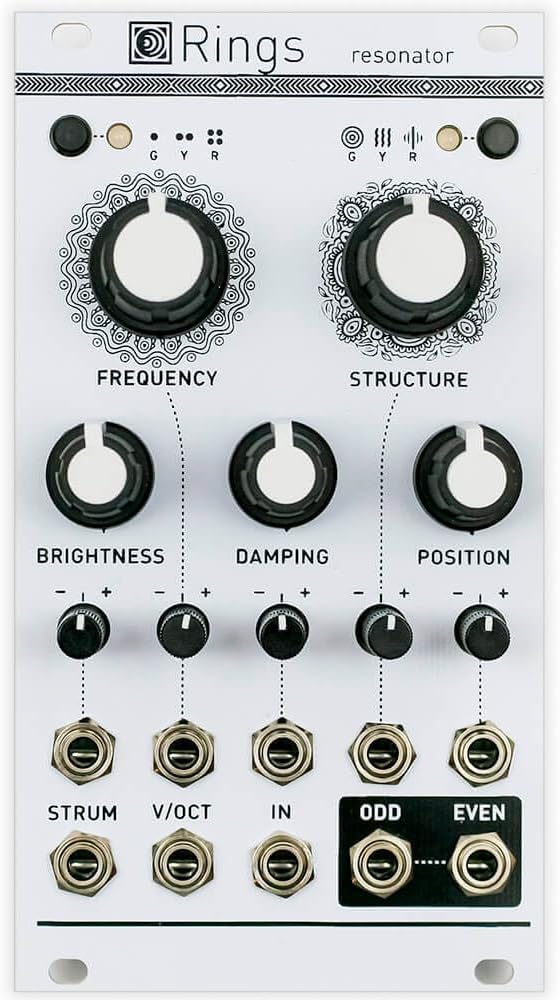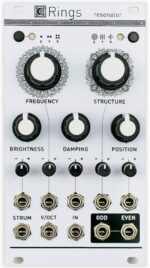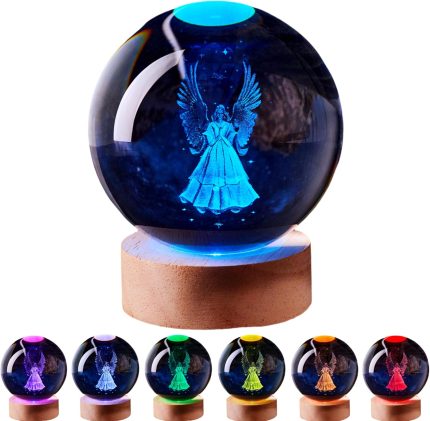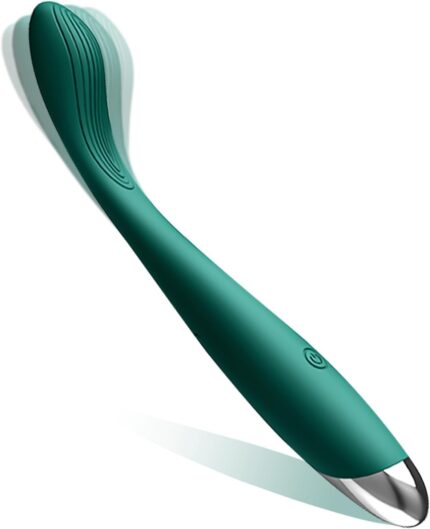Rings SMD Populated PCB and Panel – Eurorack Module PCB Set by Sound Study Modular
$134.99
Price: $134.99
(as of May 03, 2025 11:05:14 UTC – Details)
Please note: This includes the PCB and panel only. Please see the bill of materials on the Sound Study Modular website for a complete list of parts needed.
The SMD parts are already populated on the PCB, and we pre-install the firmware so that you don’t need to program anything. You can use our PCB with another manufacturer’s panel!
Rings is a resonator, the essential ingredient at the heart of several physical modeling synthesis techniques. The resonator transforms an external, unpitched excitation audio signal into a full-bodied pitched sound. Rings is the bar, the tube or the bunch of strings you cause to vibrate with a bursty external signal.
Any signal can be fed into the resonator, including envelope clicks, trigger signals, noise bursts, even tonal sounds. It also contains a special “polyphonic mode”, where four notes can ring together at the same time. Although it is not truly polyphonic, it adds density and chordal characters to the sounds output. For those wanting the functions of Elements without the losing HP real-estate, Rings is exactly the solution.
Three families of vibrating structures are simulated by the module, with CV control over their parameters:
– Strings, membranes and tubes as modeled by Elements’ resonator section (modal synthesis).
– Strings coupled together and vibrating in sympathy, with controllable intervals between them.
– Strings with a variable amount of inharmonicity.
Rings can be configured so that each new note is played on its own virtual string, while the previously played note(s) still decay. This unique take on polyphony allows the module to play strummed chords.
Features:
– Three resonator models
– Modal resonator (as used in Elements)
– Sympathetic strings (stack of comb filters)
– String with non-linearity/dispersion (comb filter with multimode filter and non-linearities in the loop).
– Pseudo-polyphony of up to 4 notes. Each new note is played on its own virtual string, while the previously played note(s) still decay.
– Main frequency quantized in semitones
– Structure Control changes the response of the resonator
– Brightness Control specifies the brightness and richness of the spectrum
– Damping controls the damping rate of the sound, from 100ms to 10s
– Position specifies at which point the structure is excited
– Two audio outputs, either splitting odd/even partials in monophonic mode, or even/odd notes in polyphonic mode.
– Voltage change detector on the V/O input, allocating a new polyphony voice each time a different note is played.
– Internal exciter triggered by the STRUM input (filtered pulse or noise burst), allowing the module to be used without an external excitation source.
Controls:
– Number of strings/structures (1, 2 or 4).
– Synthesis model (modal, sympathetic strings, string).
– Main frequency (quantized in semitones).
– Structure. With the modal and string models, controls the inharmonicity of the spectrum (which directly impacts the perceived “material”). With the sympathetic strings model, controls the intervals between strings.
– Brightness. Specifies the brightness and richness of the spectrum.
– Damping. Controls the damping rate of the sound, from 100ms to 10s.
– Position. Specifies at which point the structure is excited.
Inputs and Outputs:
– Frequency, structure, brightness, damping and position modulation CV inputs with attenuverter (-8V to +8V).
– “Strum” trigger input to indicate when a new polyphony voice needs to be allocated. Normalized to an edge detector detecting changes on the main V/Oct input, or sharp transients on the audio input. Detection threshold at 0.6V.
– 1 V/Oct frequency input (-1V to +5V).
– Resonator audio input, normalized to a filtered pulse/noise burst triggered by the “Strum” input (for stand-alone use). Modular level, up to 16Vpp.
– Two audio outputs, splitting the signal into even/odd partials in monophonic operation, or even/odd notes in polyphonic operation.
Specifications:
– Module width: 14HP
– Module depth: 25mm
– Current draw: 120mA @ +12V, 5mA @ -12V
Please note: This includes the PCB and panel only. Please see the bill of materials on the Sound Study Modular website for a complete list of parts needed. The SMD parts are already populated on the PCB, and we pre-install the firmware so that you don’t need to program anything. You can use our PCB with another manufacturer’s panel!
Rings is a resonator, the essential ingredient at the heart of several physical modeling synthesis techniques. The resonator transforms an external, unpitched excitation audio signal into a full-bodied pitched sound.
Any signal can be fed into the resonator, including envelope clicks, trigger signals, noise bursts, even tonal sounds.
Three families of vibrating structures are simulated by the module, with CV control over their parameters.
Pseudo-polyphony of up to 4 notes. Each new note is played on its own virtual string, while the previously played note(s) still decay.
Specifications: Module width: 14HP; Module depth: 25mm; Current draw: 120mA @ +12V, 5mA @ -12V


MAECENAS IACULIS
Vestibulum curae torquent diam diam commodo parturient penatibus nunc dui adipiscing convallis bulum parturient suspendisse parturient a.Parturient in parturient scelerisque nibh lectus quam a natoque adipiscing a vestibulum hendrerit et pharetra fames nunc natoque dui.
ADIPISCING CONVALLIS BULUM
- Vestibulum penatibus nunc dui adipiscing convallis bulum parturient suspendisse.
- Abitur parturient praesent lectus quam a natoque adipiscing a vestibulum hendre.
- Diam parturient dictumst parturient scelerisque nibh lectus.
Scelerisque adipiscing bibendum sem vestibulum et in a a a purus lectus faucibus lobortis tincidunt purus lectus nisl class eros.Condimentum a et ullamcorper dictumst mus et tristique elementum nam inceptos hac parturient scelerisque vestibulum amet elit ut volutpat.

























Reviews
There are no reviews yet.